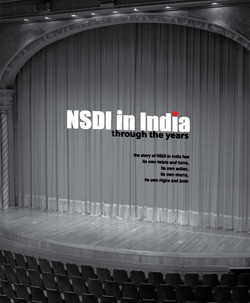| GNSS News | |
GNSS
Prototype sensor against GNSS signal threats
A new prototype sensor developed by the NATO Communications and Information Agency has completed a significant round of testing, marking a step forward in NATO’s electromagnetic warfare capabilities. The sensor, GANDALF 4, underwent a series of tests at an advanced anechoic chamber operated by the NATO Support and Procurement Agency. This facility serves as a controlled environment for precise calibration and detailed performance assessment of the sensor’s antenna array, which is critical for ensuring the system’s accuracy and reliability.
GANDALF 4 was developed by specialists at the agency’s Joint Intelligence, Surveillance and Reconnaissance Centre. The system is designed to detect, classify and locate deliberate attempts to interfere with or manipulate GNSS signals. GNSS jamming and spoofing are becoming more frequent and sophisticated, posing challenges to NATO’s operational readiness and resilience. The development of GANDALF 4 is designed to enhance situational awareness in contested electromagnetic environments. The recent testing phase focused on evaluating the antenna performance of the sensor.
Beyond Gravity supplies high power antenna for ESA mission
On April 29, the European forest satellite “Biomass” was launched into space from Kourou aboard a European Vega-C rocket operated by Arianespace.
The company Beyond Gravity, based in Zurich, Switzerland, supplied several key products for this mission. Its high-power antenna and navigation receiver will provide the satellite’s precise position in orbit. Also, the satellite will be protected by the company’s thermal insulation. The X-band helix antenna design was developed for ESA by the company’s site in Gothenburg, Sweden. It also provided the S-Band TTC (telemetry, tracking and command) antenna. beyondgravity.com
Call for reversal of FCC Ligado Order by SSA
In letter to Federal Communications Commission’s (FCC), the Satellite Safety Alliance (SSA) and 93 companies and organizations stated the need for the Ligado Order to be overturned by President Trump and Congressional leadership.
“The proposed network is designed to inappropriately use spectrum reserved for satellite communications, causing significant interference to other services,” the SSA stated. Interference with GPS is a major concern of the group.
The letter urges the president and the chairs and ranking members of the House and Senate armed services and commerce committees to work with the FCC on granting petitions for reconsideration that will help prevent the building of Ligado’s terrestrial wireless network.
“For over two decades, Ligado and its predecessors have tried and failed to build a terrestrial network that wouldn’t harm GPS, national security, and other critical interests,” commented the SSA. “The FCC’s Ligado Order has faced unprecedented opposition, including from 14 federal agencies and over 90 organizations representing huge swaths of the economy — from aviation and agriculture to science and manufacturing. Rarely does any issue garneragreement from such a wide and divergent group of constituencies.”
Congress found through independent analysis that the Ligado Order poses unacceptable risks of interference to GPS, satellite communications, weather forecasting, and other services, the SSA explained. “Countless federal staff hours and resources have gone to reviewing, debating, and litigating this issue. It is past time the FCC put the issue to rest by granting the pending petitions for reconsideration.”
“Z” axis breakthrough in GPS-denied areas
Balboa Geo, in partnership with the Texas A&M Engineering Extension Service (TEEX) and the George H.W. Bush Combat Development Complex (BCDC), completed a rigorous field testing campaign of its POINTER system, a “dual-use,” real-time alternative positioning, navigation and timing (A-PNT) technology designed for GPS-denied, degraded and disrupted environments, including indoor, subterranean and obstructed urban settings.
The POINTER field test plan involved 130 tests across seven challenging testing and training venues located at TEEX and the BCDC.
Test venues included:
• A three-story concrete structure with 10-inch thick, rebar-reinforced concrete walls
• A compartmentalized steel-hulled ship with three decks reaching approximately 25 ft high
• A steel shipping container (CONEX)
• A simulated collapsed structure and rubble pile composed of steel, concrete, and a 90° tunnel network
• A simulated industrial oil refinery with processing equipment and complex, elevated steel piping
• A six-story steel training tower with metallic siding throughout
• The BCDC military-grade subterranean tunnel network, featuring a main tunnel at about 10 ft deep and a heavily shielded segment with Faraday cage properties simulating greater depth Highlights of the summary results and key findings:
• MQS field penetration and position location were achieved at all seven test venues.
• Real-time, three-dimensional distance measurements were obtained for all 130 tests.
• The mean positional uncertainty across all venues was 12.62 cm.
• Positional uncertainty ranged from 2.5 cm to 36 cm, depending on venue complexity, receiver location, and transmitter-receiver distance.
• Vertical measurements at the concrete structure showed uncertainties as low as 2.5 centimeters at a distance of about 11 m, and up to 24 cm at about 30 m.
• The POINTER system demonstrated penetration into and out of the BCDC military-grade tunnel network, including the shielded portion, indicating flexibility and performance in challenging subterranean environments.
balboageolocation.com












 (No Ratings Yet)
(No Ratings Yet)





Leave your response!